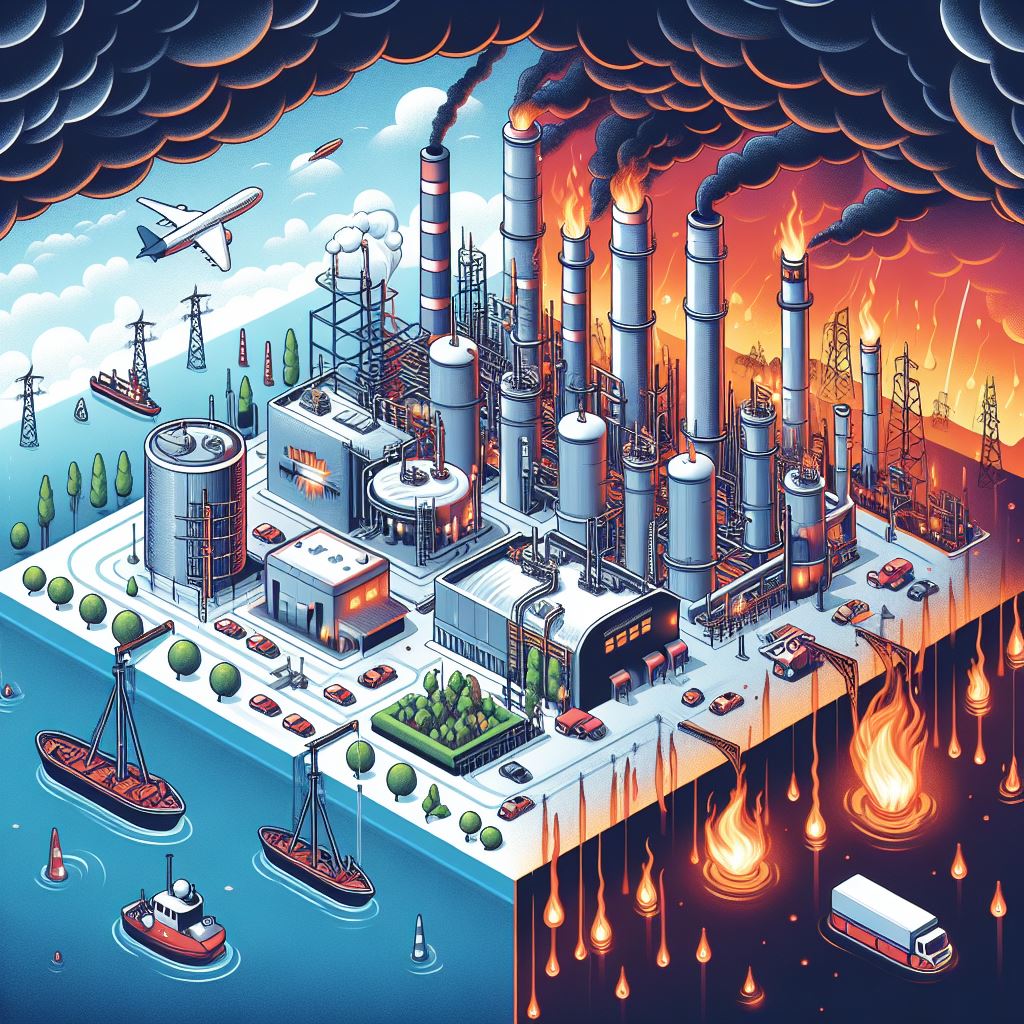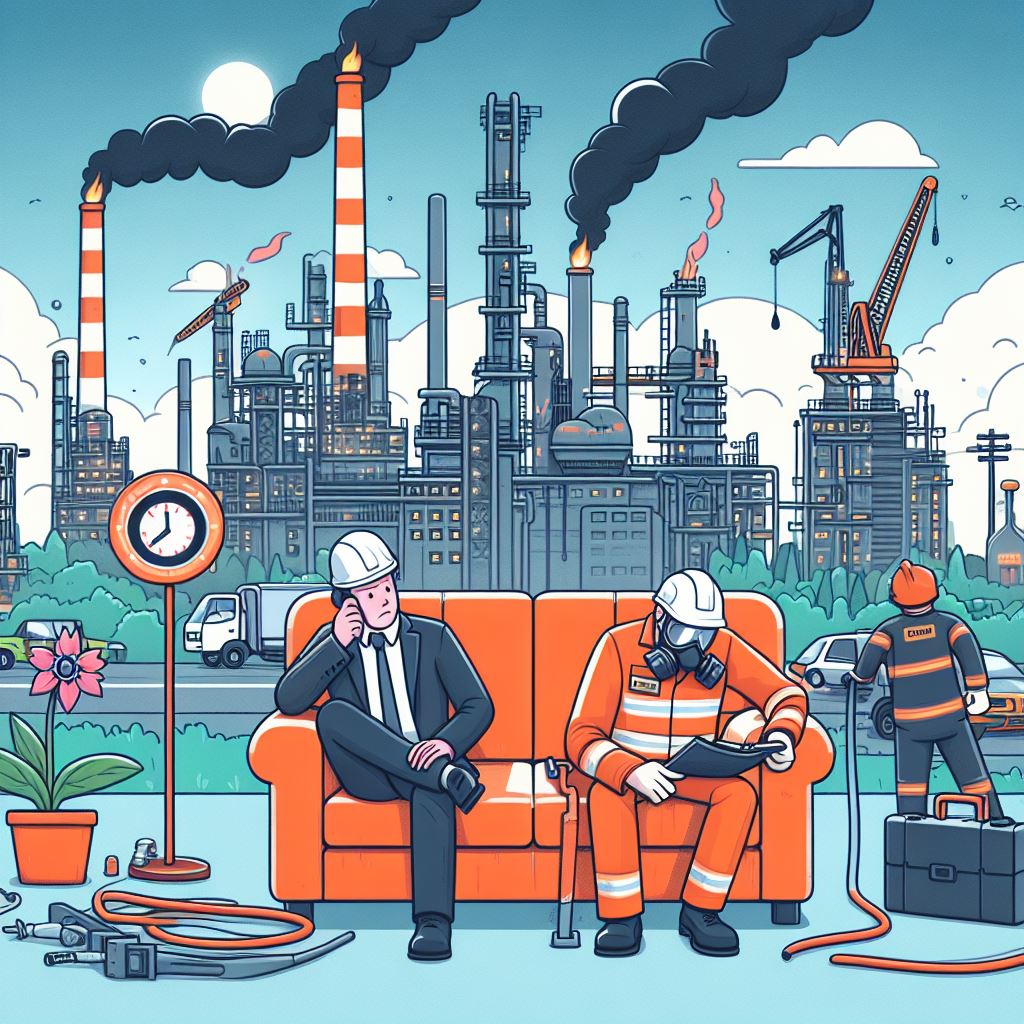為何炸俄羅斯煉油廠比西方制裁有效?
最近一個月以來,至少有4座俄羅斯大型煉油廠遭受無人機攻擊,其中薩瑪拉煉油廠更發生劇烈爆炸,這對該國的經濟命脈造成嚴重打擊。與此前烏克蘭對俄羅斯本土的攻擊範圍相比,這些無人機攻擊的移動距離已經達到1000公里以上,顯示攻擊的規模和影響持續擴大。在別爾割羅德地區,反俄羅斯的自由軍團與西伯利亞營已經俘虜12名俄羅斯軍人,並逼迫對方錄製反俄羅斯的口號,指責俄羅斯是侵略者。這些事件在網絡上迅速傳播,並引起廣泛關注。烏克蘭當局迅速聲明,這些行動與他們無關,並指稱這兩個軍團均為俄羅斯反對派。這些煉油廠遭受攻擊的事件來看,無人機攻擊已成為比西方制裁俄羅斯的手段更有效果,對俄羅斯的經濟和軍事基礎造成嚴重影響。
煉油廠一旦發生火災後很難恢復運作,主要是因為以下幾個原因:
1.火災造成的破壞和損失可能導致煉油廠內部結構的嚴重受損,包括設備、管道、倉儲設施等,這會對工作人員的安全構成威脅,使得恢復工作變得極其危險。
2.火災往往會引起設備的嚴重燒毀和損壞,包括煉油爐、反應器、蒸餾塔等重要設備,需要進行修復或更換。這樣的修復過程通常需要耗費大量時間和資金,並且可能會受到供應鏈瓶頸的影響。
3.火災會釋放出大量的有毒氣體和化學物質,可能造成環境污染和生態破壞。在處理火災後,必須進行環境清理和恢復工作,這需要額外的時間和資源。
4.火災造成的生產中斷會給煉油廠帶來巨大的經濟損失,因為停產會導致原油庫存的下降,生產計劃的延誤,以及合同履行的困難。此外,由於火災的影響,可能還需要重新審查和調整生產流程和安全措施。
5.火災發生後,必須進行詳細的調查和審查,以確定火災的原因和責任。這涉及到政府部門、保險公司、煉油廠管理團隊以及其他利益相關者的合作,這會延遲恢復工作的進行。
總結而言,煉油廠一旦發生火災後,恢復運作需要克服諸多困難和障礙,需要進行大量的修復工作、安全評估和監管審查,因此常常需要較長時間才能重新啟動生產。
In the past month, at least four major Russian oil refineries have been targeted in drone attacks, with the Samara refinery experiencing a severe explosion, dealing a significant blow to the country's economic lifeline. Compared to previous Ukrainian attacks on Russian territory, these drone attacks have extended their reach to over 1000 kilometers, indicating an expansion in both scale and impact. In the Belgorod region, anti-Russian militias have captured 12 Russian soldiers, forcing them to record anti-Russian slogans, accusing Russia of aggression. These incidents have quickly spread across the internet, garnering widespread attention. Ukrainian authorities promptly disclaimed involvement, attributing both militias to Russian opposition groups. These attacks on refineries suggest that drone strikes have proven more effective than Western sanctions in impacting Russia's economy and military infrastructure.
After a refinery fire, it's difficult to resume operations primarily due to the following reasons:
The damage caused by the fire can lead to severe structural damage within the refinery, including equipment, pipelines, and storage facilities, posing a significant threat to worker safety and making recovery efforts extremely hazardous.
Fires often result in severe destruction and damage to equipment, including refining furnaces, reactors, distillation towers, and other critical infrastructure, necessitating repairs or replacements. Such repairs typically require extensive time and resources, and may be subject to supply chain bottlenecks.
Fires release large quantities of toxic gases and chemicals, potentially causing environmental pollution and ecological damage. Environmental cleanup and restoration efforts are required post-fire, requiring additional time and resources.
Production interruptions caused by fires result in significant economic losses for refineries, as shutdowns lead to depleted crude oil inventories, production delays, and difficulties in fulfilling contracts. Additionally, the impact of fires may necessitate a review and adjustment of production processes and safety measures.
Detailed investigations and reviews are required post-fire to determine the cause and responsibility, involving cooperation among government agencies, insurance companies, refinery management teams, and other stakeholders, further delaying recovery efforts.
In summary, resuming operations at a refinery after a fire entails overcoming numerous challenges and obstacles, requiring extensive repair work, safety assessments, and regulatory reviews, often resulting in prolonged downtime before production can be restarted.



照片:DALLE3
- 1
- 2
- 3
- 4
